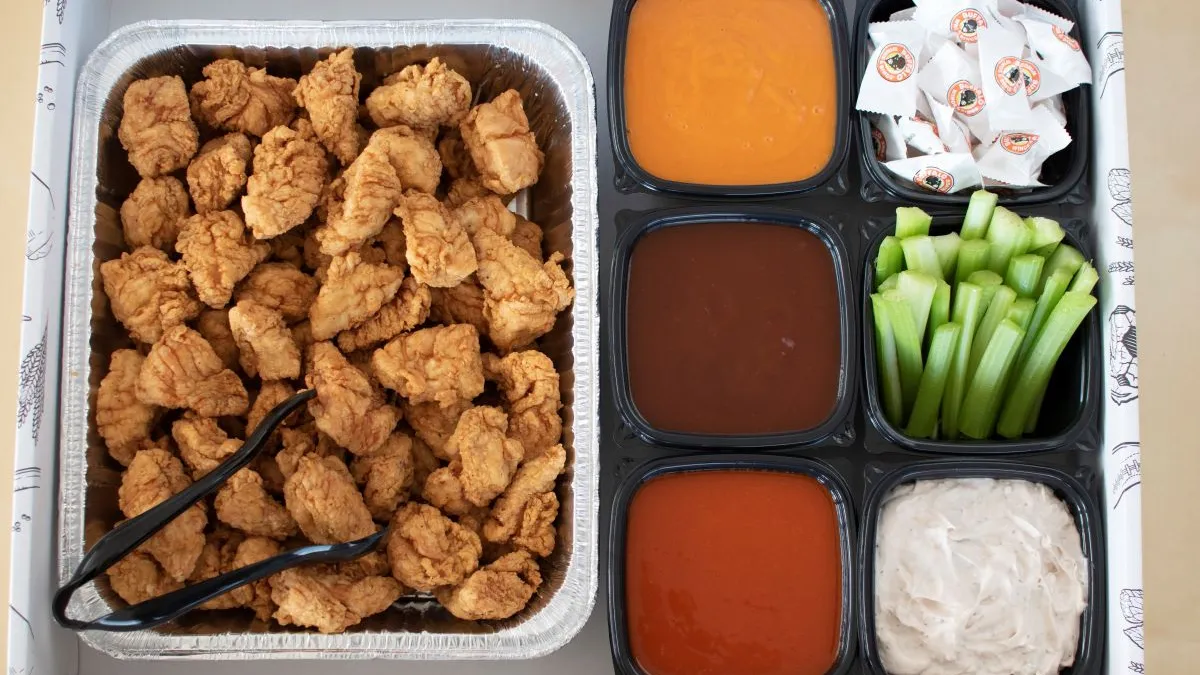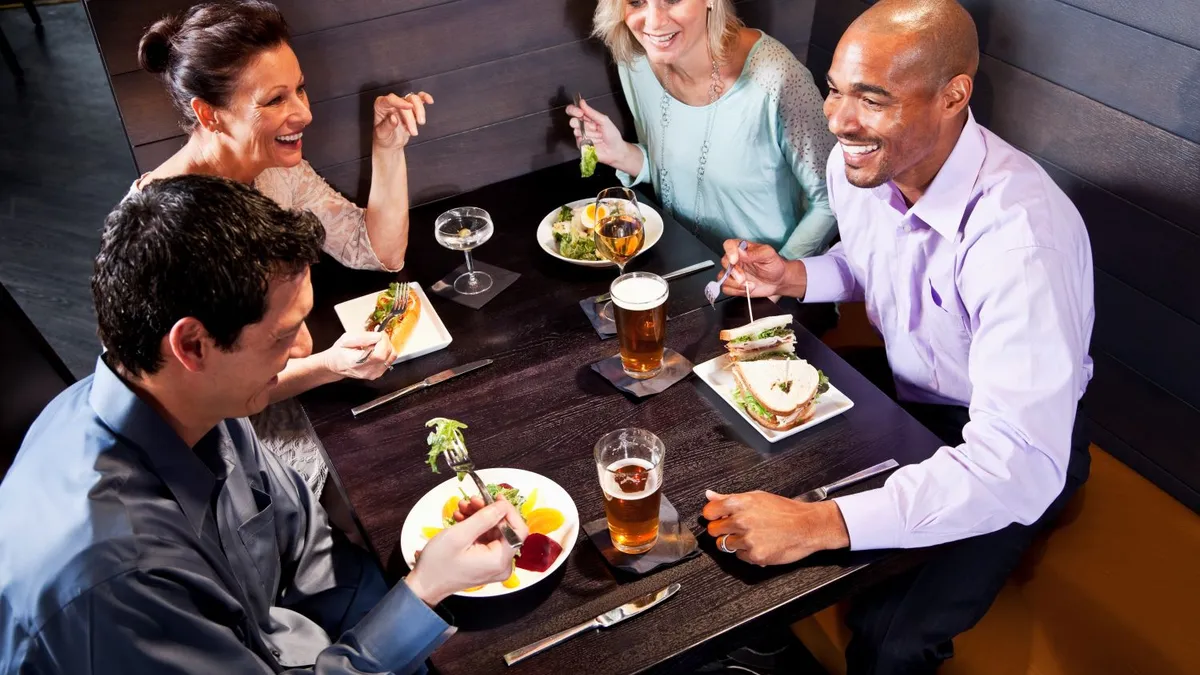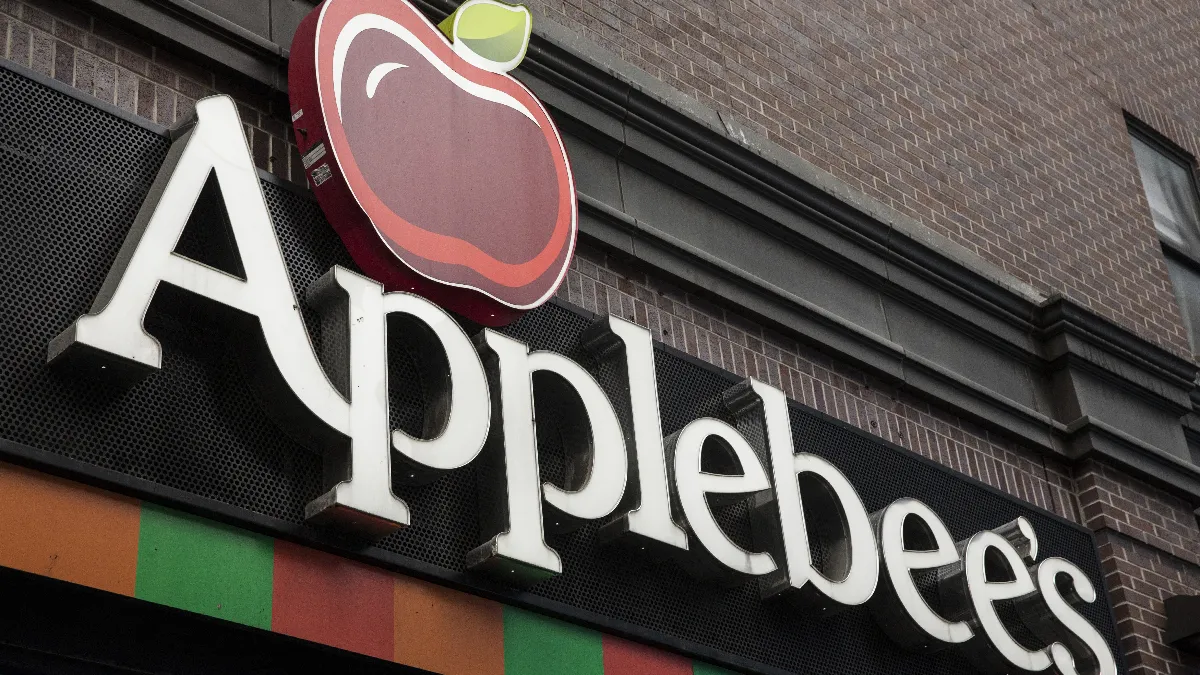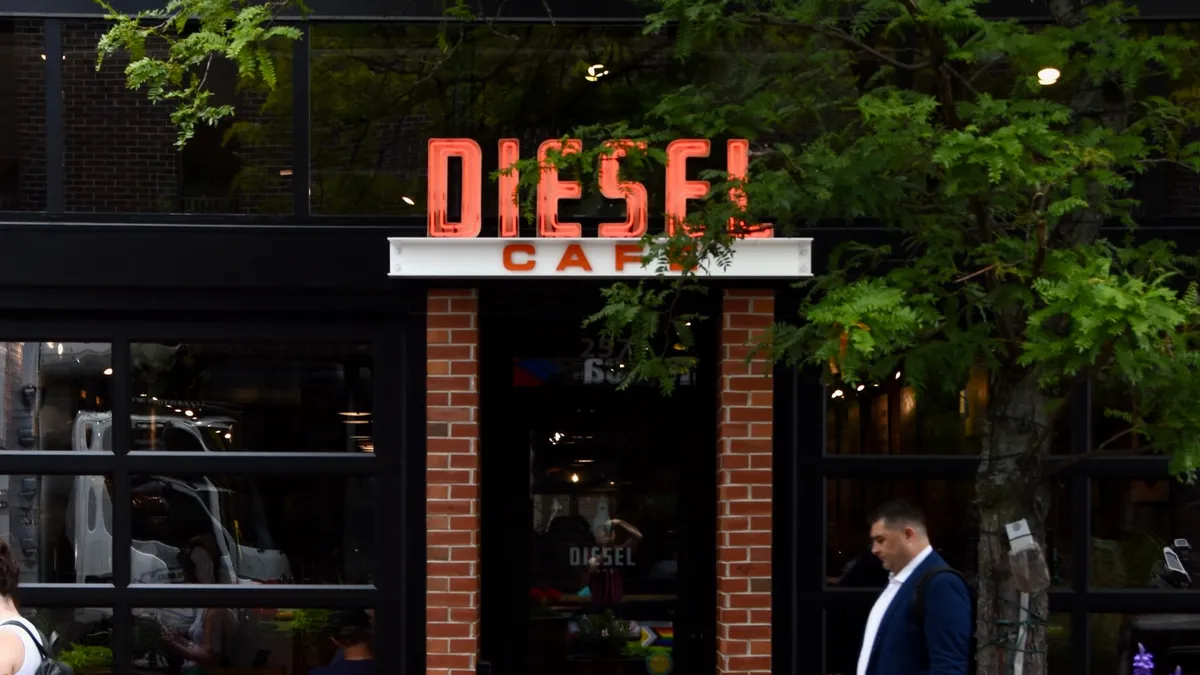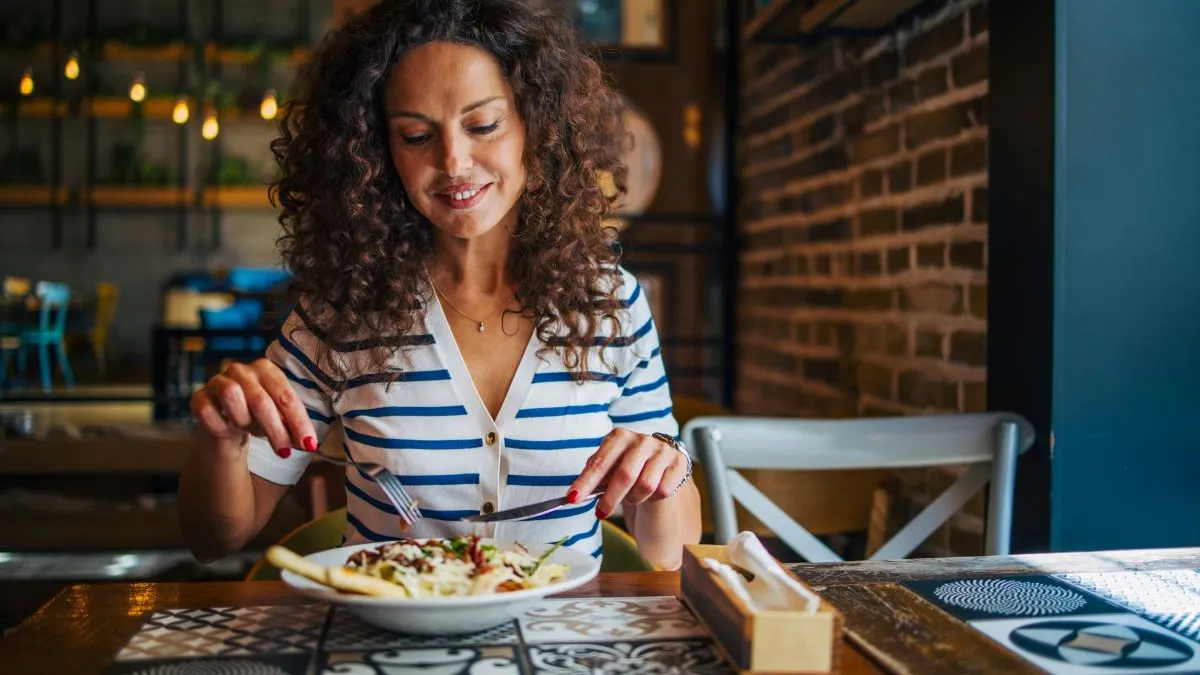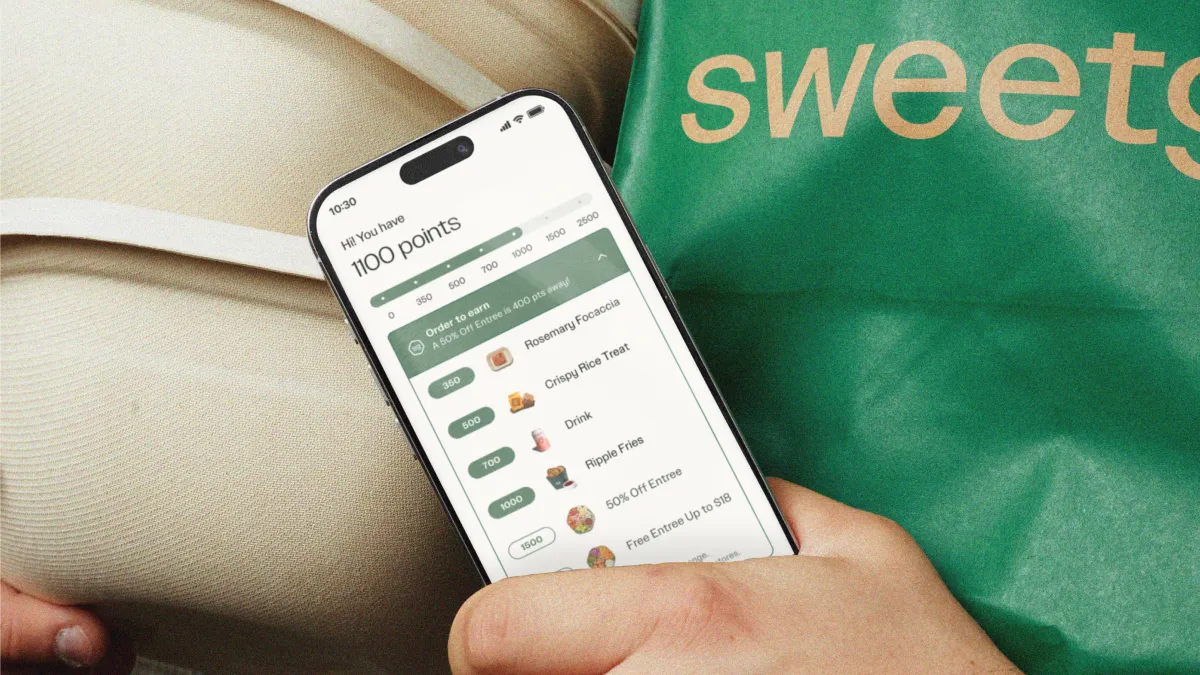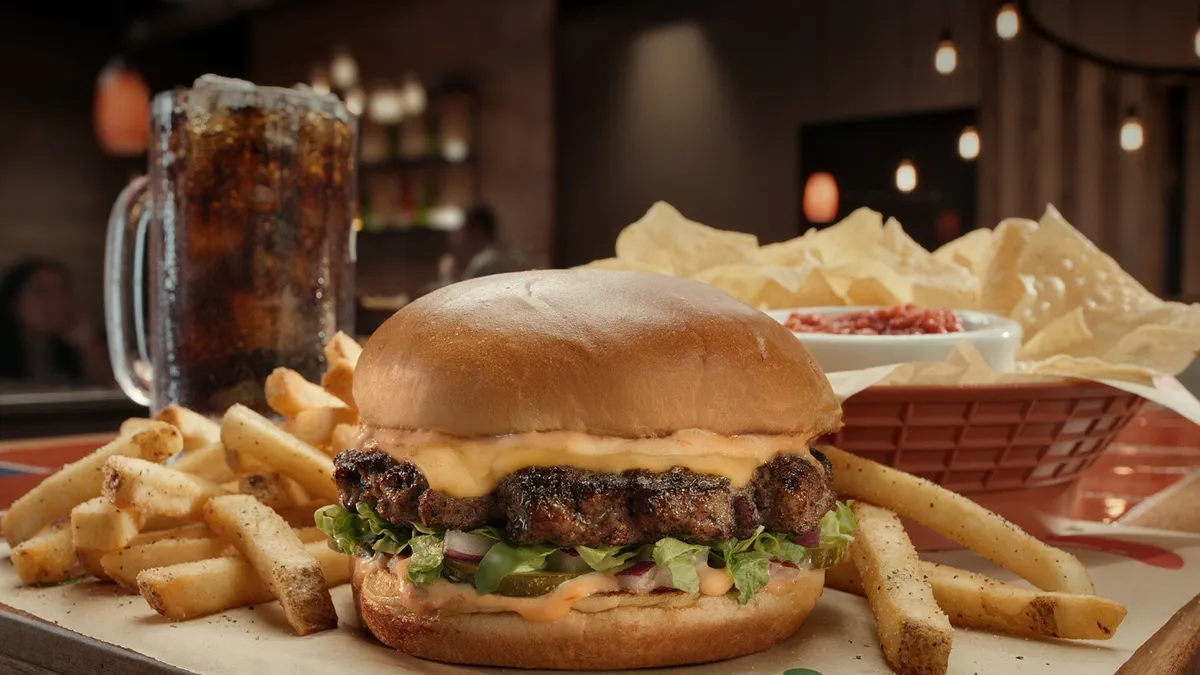From office settings to private events, catering demand is growing dramatically. Offices need a better way to feed their hybrid workforces, and more consumers are throwing parties and social events. The market potential is huge in the U.S.— last year, the catering sector reached $72.7 billion.
Now, catering business is expected to grow at a compound annual growth rate of 6.2% between 2024 and 2032, reaching over $124 billion by 2032, according to Expert Market Research.
“Both [social and business] catering are very much alive,” said Mike O'Hanlon, chief partnership officer at ezCater. “This is a channel that if [restaurants are] already in, they are investing more, and if they’re not in it, they’re looking very hard at it.”
More local, independent restaurants are embracing catering, too. EzCater is currently fielding interest from roughly 250 small restaurants weekly, and the number continues to grow.
“We love big brands. We love the chains that everyone’s heard of, but catering is also a very local and personal thing. … Our customers really want their local favorite restaurants,” O’Hanlon said.
Roughly 54% of restaurants said they plan to introduce catering services this year and this channel was the top way operators plan to boost revenue compared to adding multiple new locations (44%) and opening one location (43%), according to TouchBistro’s 2024 State of Restaurants Report.
Chains are adapting their catering menus as well, providing more boxed-lunch and individual options and expanding their reach across different digital platforms to capture customers for this profitable, high-average-check channel. And there is plenty of opportunity for growth, sources said.
“Despite the plateauing in office attendance … food spend per head is much higher,” O’Hanlon said. “The overall market is bigger now than it was before COVID.”
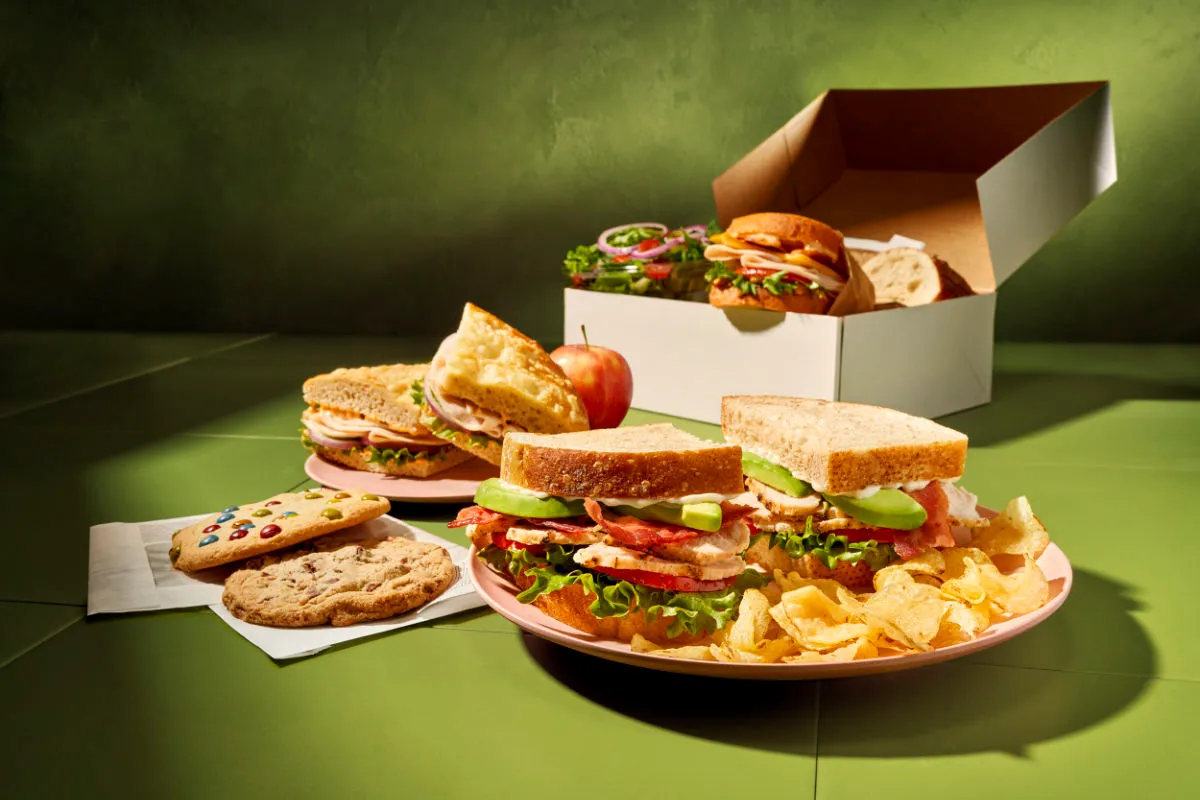
How catering is growing across restaurant chains
Multiple chains are reporting double-digit growth that doesn’t appear to be slowing down. Catering at Cracker Barrel grew 50% versus the prior year, Craig Pomells, Cracker Barrel SVP and CFO, said during the company’s fiscal Q1 2024 call in November.
In fiscal 2023, the chain achieved its goal of growing its catering business above $100 million, former CEO Sandy Cochran said in a September earnings call. For fiscal 2024, the restaurant company is leaning on its catering sales managers to drive growth, particularly with large accounts, said Julie Masino, Cracker Barrel’s president and CEO.
BJ’s Restaurants’ catering sales were 50% higher during Q3 2023 compared to the year-ago quarter, CFO Tom Houdek said in an October earnings call.
Fast casual chains like Sweetgreen and Cava have both been expanding their presence in catering, as well. Sweetgreen officially launched catering last year after rolling out the channel in select markets at the end of 2022, starting with Washington, D.C. Panera, which has offered catering since 2004, joined ezCater’s platform in September following the addition of Subway and Wawa, both of which have had catering for some time.
Qdoba’s catering business accounts for 10% of sales and grew from $1,251 per restaurant per week in 2021 to $2,973 currently, Modern Restaurant Concepts CFO Mel Tucker said during the ICR Conference in January.
“Catering is our most profitable, highest-growing business,” Tucker said. “It’s roughly 1,000 basis points more profitable on a four-wall cash basis than any other business in our restaurant.”
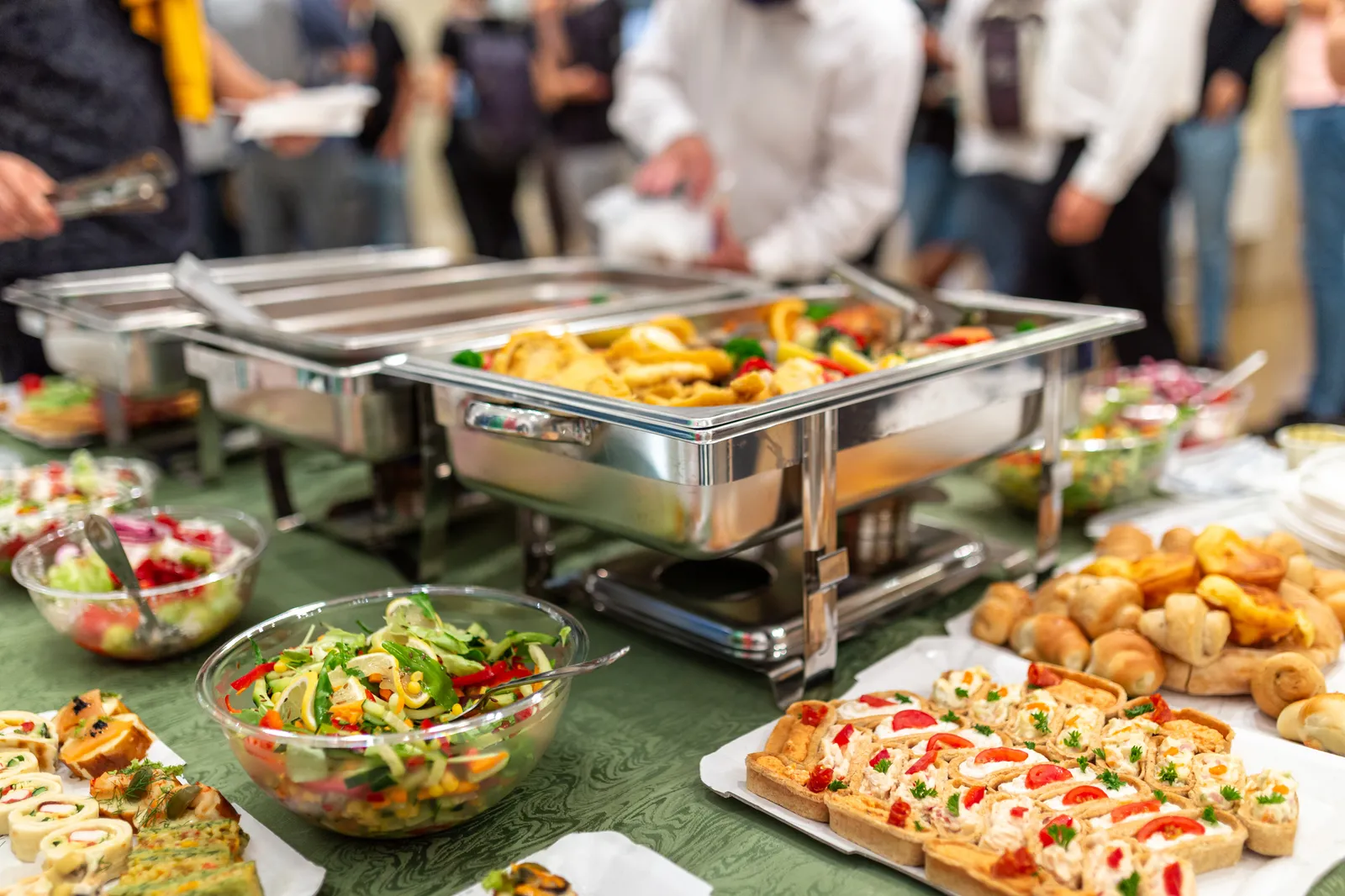
What’s driving the catering boom
Office catering is on the rise as employers use food to incentivize employees to come into the workplace, said Alison Quinn, Dinova CEO. Employers are also providing remote workers with lunch deliveries, she said. Dinova connects corporations and their employees to participating restaurants through its Dinova Connect program, which allows business diners to pay with corporate cards for large and small events.
The hybrid workforce tends to come into the office Tuesday through Thursday, with Tuesday being the peak day, Quinn said. Because fewer employees come into the office five days a week, some offices no longer offer onsite cafeterias, which has helped increase demand for catering.
Office catering has become easier to anticipate since demand has primarily stemmed from orders placed on Tuesday through Thursday, while event catering tends to be off-hours and in the evening. That means restaurants can more efficiently plan out how to fulfill these orders that are typically made ahead of time, Quinn said.
Dinova has seen an increase in catering for business-related events as offices work to increase employee engagement with workforces often split between hybrid and virtual employees. Business travel is also up and is expected to exceed pre-pandemic levels this year, she said. Dinova recently brought Main Event onto its platform, which provides an additional option for corporations to bring their employees together to socialize and build relationships, she said.
“The consumer diner is not expected to grow this year. They may actually decrease the amount of spend,” Quinn said. “Whereas business dining is not price sensitive. … Business dining is growing and consumer dining has flattened. That’s a huge opportunity for restaurants to focus a bit more on business dining versus on consumer dining.”
And there’s plenty of money on the table. The amount of catering transactions that are $3,000 or higher is increasing, Quinn said.
Catering platforms have also been making it easier for restaurants to offer more catering orders. EzCater, for example, offers a product called Relish that allows individual workers to order meals from restaurants that are subsidized by their employers. Restaurants then receive a pre-scheduled, aggregate group of orders that are easier to fulfill than getting 30 orders all at once, O’Hanlon said.
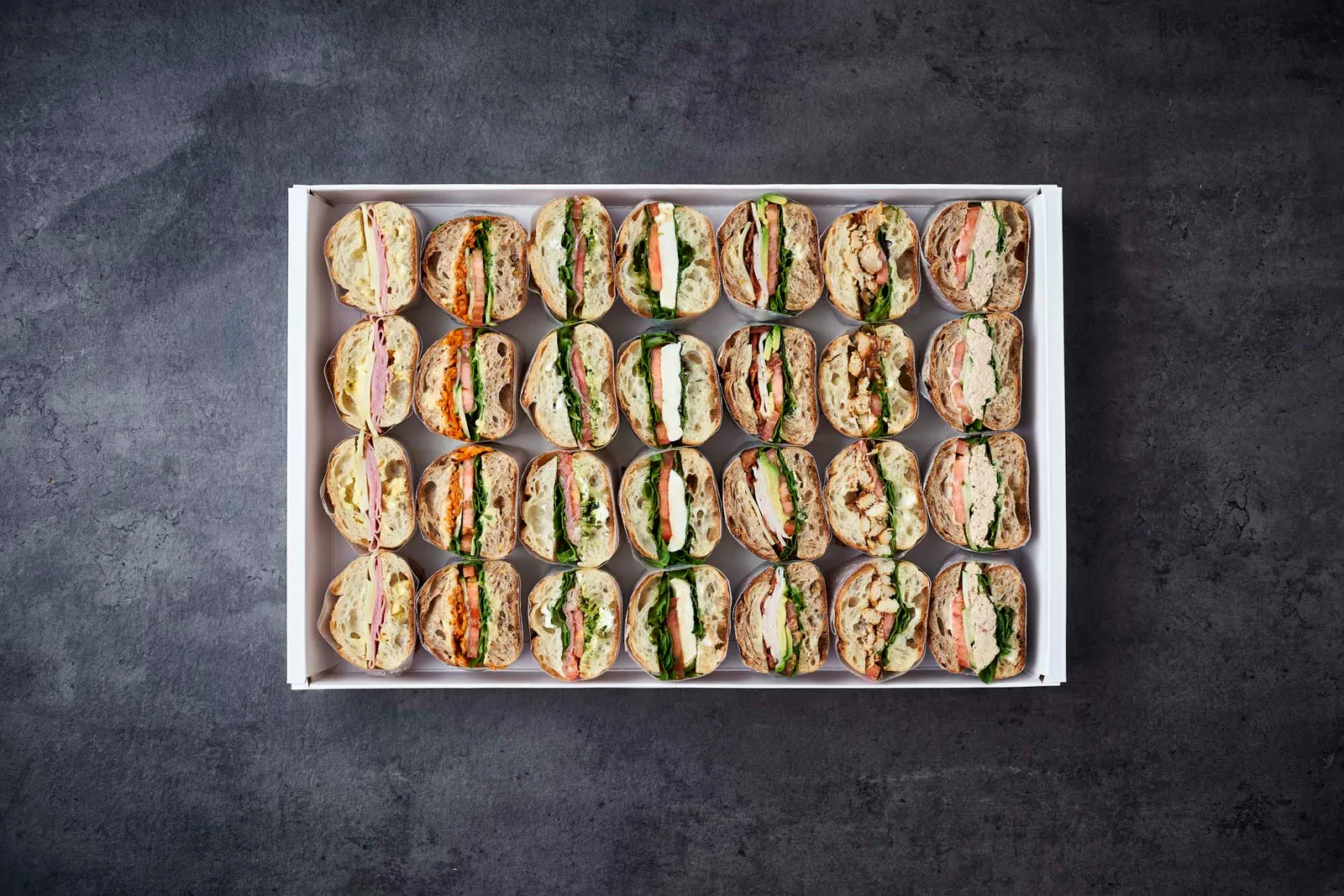
Why catering is no longer just office-based
Individual meals and boxed lunches grew in popularity during the pandemic due to safety issues, but the popularity of such offerings continues to grow — especially since individual lunches can be a great way to attract workers into the office, O’Hanlon said.
“Tray catering is not dead. It’s more or less back, but our best catering partners are also offering individually packaged items like sandwiches and boxed lunches,” O’Hanlon said, adding that how people order really depends on preference and where their workplaces are.
Individual meals are also popular as a catering option for non-office based locations like construction sites and distribution centers. EzCater has expanded in these segments since the pandemic, when office attendance tanked, because there was opportunity to cater to essential workers at hospitals, construction sites, factories and distribution centers.
“If I could predict into the future, I think more around-the-clock use cases will be part of our future,” O’Hanlon said. “That’s dinner, that’s lunch, but at 4 a.m. because that’s the third shift at the factory.”
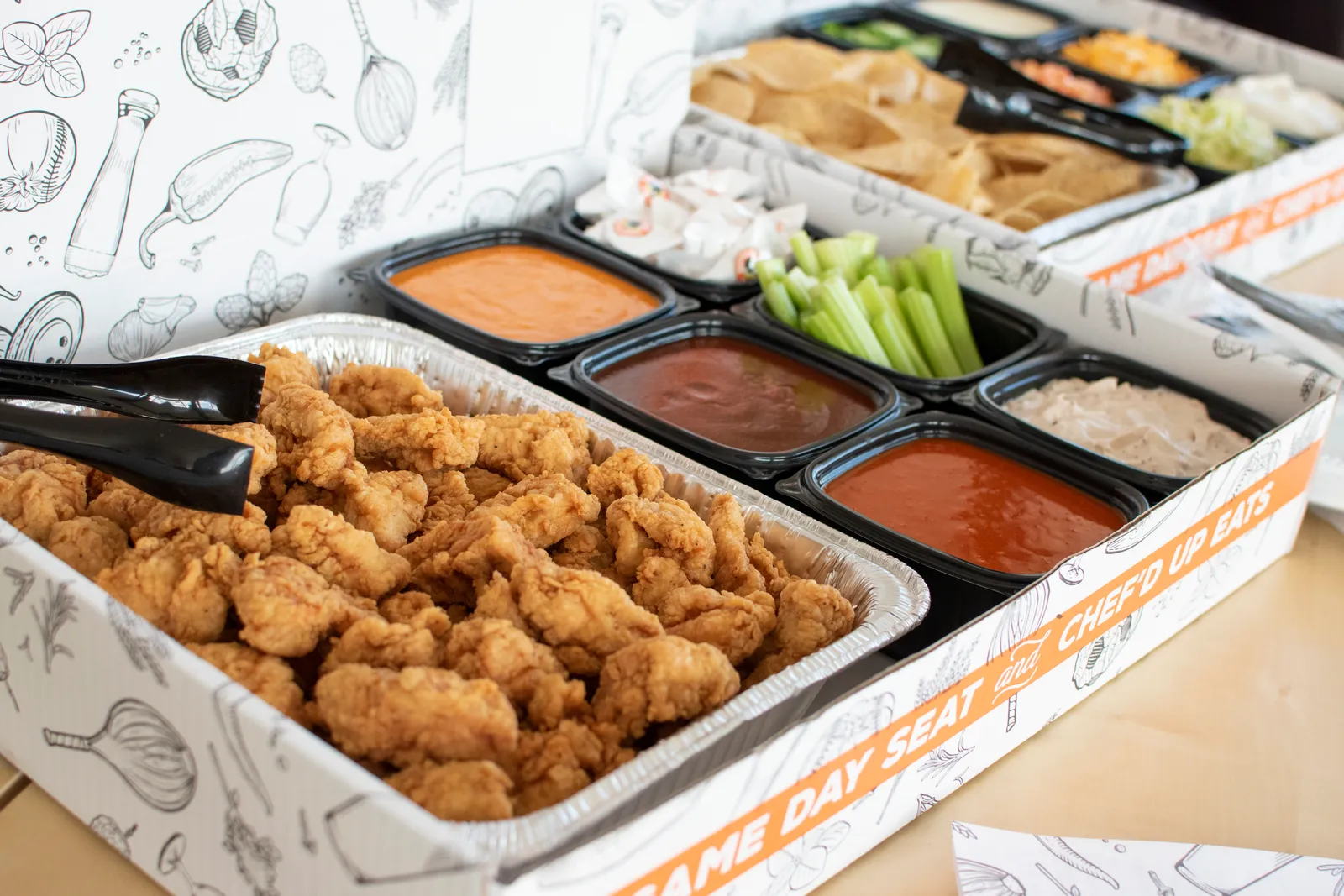
Catering menus are getting more diverse
People want more flexible menus that have a range of dietary options, such as vegan, gluten free and allergy friendly, Quinn said. Many chains have developed catering offerings that deliver on this diner demand.
Within the past year, Wings & Rings has seen catering grow in the double-digits, Dan Sweatt, Wings & Rings’ field marketing manager, said. To best appeal to this demand, the chain adapted its menu with different catering options, like wings platters that include sauces, celery and blue cheese that are packaged in a more organized manner.
The chain also offers individual box lunches that have helped it serve the business crowd. Boxed lunches have also appealed to families going on day trips, who can stop into a restaurant in the morning and grab a lunch on the go. The chain also offers party boxes with appetizers.
Wings & Rings already offers a core menu that includes a diverse array of wings, appetizers and salads, so the key is to highlight the different diet needs — such as vegan or vegetarian — that its food caters to, Sweatt said. The chain offers several different sauces to provide different flavors, as well as cauliflower wings to appeal to non-meat eaters. The company also offers large salads to provide more healthy options.
“People really want to be able to customize and have options, especially as you get back into the office and you’re having these larger parties. People want different things,” Sweatt said.
Now that consumers are used to streaming live sporting events at home, more people are hosting Super Bowl parties, especially post-COVID-19, Sweatt said. Wings & Rings added party snack boxes leading into the last Super Bowl and saw huge demand. The company continues to invest in packaging, especially since it adds an element of brand presentation for parties as well, Sweatt said.
“People want to eat at home more, but still would like a restaurant food experience,” Sweatt said.
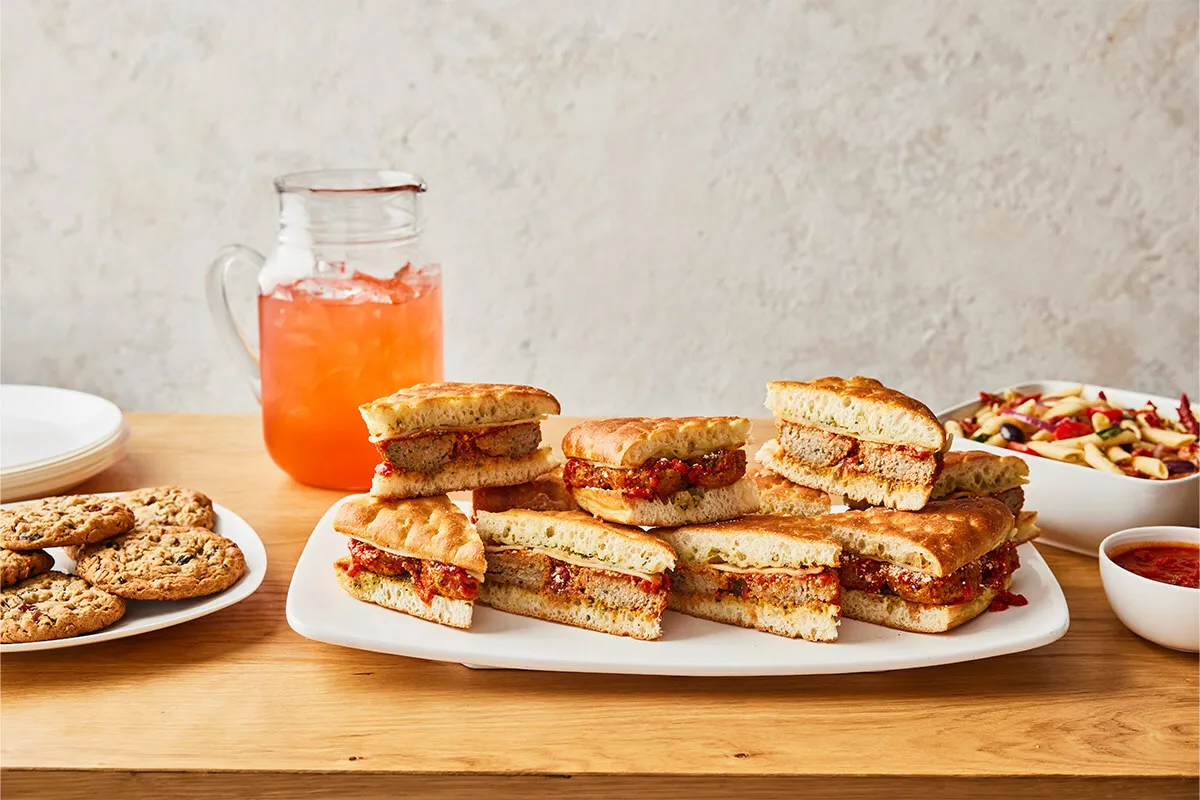
How chains are adapting to growing demand
Paris Baguette has seen an increase in business catering as well as gifting catering for things like large cakes and cupcakes, Paris Baguette’s Chief Operating Officer Nick Scaccio said. Over the past few years, the chain revised its packaging and tailored its orders to the average size of orders, which is about 50 attendees, that it has seen post-pandemic. Its catering menu, which has been revised in the past few years, includes assorted pastry boxes, handcrafted doughnuts, croissant breakfast sandwiches, baguette sandwich packages and lunch boxes.
Paris Baguette also shrunk its catering order lead time from 72 hours a few years ago to two to four hours, depending on the offering. With crossover on its in-store and catering menus, it is easier to fulfill many of these orders within cafes. Paris Baguette is looking into partnering with catering partners in the CRM space, as well, Scaccio said.
The chain is also focusing on simplifying operations and integrating technology so that orders coming in from its app, online or through a third-party catering platform flow through its point-of-sales system, Scaccio said.
Bloomin’ Brands launched Carrabba’s Sandwich Bistro last year for its Italian food brand to provide lunch-focused catering with sandwich bundles (which include a side and cookie), boxed lunches and trays. The company’s catering channel “continues to outperform our expectations,” Bloomin’ CEO David Deno said in a November earnings call. Off-premise and catering represented 34% of Carrabba’s sales during the third quarter, he said.
“We’re very bullish on what the catering business and what the off-premises looks like at Carrabba’s,” Deno said. “And we’ve seen sales levels that are just terrific.”
Cava has been developing different restaurant formats as a way to accommodate its growing catering business. In addition to trialing a format that only has digital ordering and delivery pickup alongside catering, it is testing a hybrid kitchen model. The model has an in-restaurant service line, digital make line and 300 square feet of kitchen production space to be a central hub for catering. Cava is also testing which existing restaurants have capacity to support catering.
This year, Wings & Rings will invest more in marketing its catering menu. Within the past 12 to 18 months, Wings & Rings put a lot of emphasis on its digital platform to make sure it is easy to use. That means ensuring that it has a robust presence of third-party apps like DoorDash and Uber Eats, and investing in digital ads through platforms like Google. Sweatt said that the chain also ensured that it has in-store ads.
“Catering orders are huge because it’s money that you’re going to make ahead of time,” Sweatt said. “Preorders are great. The more you can generate, the more revenue you know is coming in and you’re able to plan ahead of time to make … the best product. … We love catering. We want to do as much catering business as possible.”



